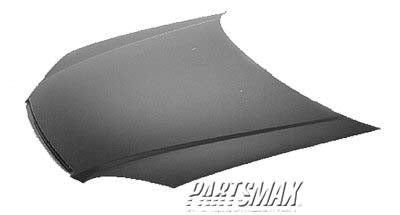
Custom hoods provide designs that range from simple to fashionable. You can get relief from the monotonous OEM panels. While you select a replacement hood for your car, one choice that you will have to make is the hood material. Most of the custom hoods make use of light material than what you get in a factory. For Replacement hoods for cars, you have to scrutinize and compare hood material. Let us check them out here.
1) Carbon Fiber – Carbon fiber material is also called fiber reinforced polymer. It is a polymer like material that makes the car hood stronger. The carbon fiber material is manufactured from carbon atoms, where crystals bond them together. Due to this binding, the material is very strong in its thickness and weight. Car hood from this material gives a distinct appearance due to the fibers present in the material. Car hoods from this material weigh only one fourth of steel ones. It is also cheaper than other materials. A few of the features of this material are:
a. Carbon fiber hoods are lightweight and very strong. This feature enables car racing users to use this car hood for racing. It is also used for those applications that require more strength without weighting that of steel.
b. Carbon fiber car hoods have great value for their appearance and high performance. It is coated and need not paint the hood. The main disadvantage of carbon fiber is its high production cost compared to other materials.
Carbon fiber hoods provide a choice of custom hood designs or OEM matching looks with more power dome, air scoops, and vent slats that reduce heat soak.
2) Fiberglass – Fiberglass materials are easier and cheaper to manufacture. However, the fittings and appearance do not match carbon fiber material. A few benefits of fiberglass material are:
a. Low weight
b. Good resistance to temperature change
c. Easy to paint
d. Low cost
Fiberglass is stiff and more care is required during installation, as fiberglass parts are rough in texture. They require extra finishing work when it comes out of mold like filling and sanding during installation to make sure that the appearance comes out well and is acceptable.
Over the years, fiberglass has got a bad rap as it is inexpensive and has led low quality parts that came to the market. It became weak and rough to install. To fight this, manufacturers ensure fiberglass hoods provide a better appearance and finish making it easy for installation.
Amerihood fiberglass car hood focuses on custom hood designs that suit best for truck and SUV vehicles.
Duraflex car hoods are manufactured from materials combining plastic, fiberglass, and flexible resins giving a product similar to fiberglass, however with bend and flex. This car hood comes with many models.
3) Polyurethane – Polyurethane is also called urethane is a material for car hoods that is less popular. It does not provide the weight of that of carbon fiber and fiberglass. However, the fittings and appearance are superior to fiberglass. This material is more flexible than fiberglass, thereby making it easier to install and durable. This material can be coaxed into proper position at the time of installation and need not fear of cracking. The end product will fit in properly. Polyurethane car hoods are not the best choice for car racing due to their lightweight. The final surface of Polyurethane car hoods is smoother than fiberglass and it has to be painted properly. Polyurethane is vulnerable to extreme heat, so you need to consider the environment as well when you go for this material. Before going to the original dimension, this material can be elongated and stretched, and hence flexible to use.
The car hood material depends on many factors. As per your requirement, you might need to prioritize it like painting ease, weight, and cost. Whatever you select, you need to be clear that it is viewable from the driver’s seat and needs to be clean and neat. So, decide on what your requirement is and select the material.




 March 15th, 2022
March 15th, 2022  Bernie
Bernie  Posted in
Posted in 



